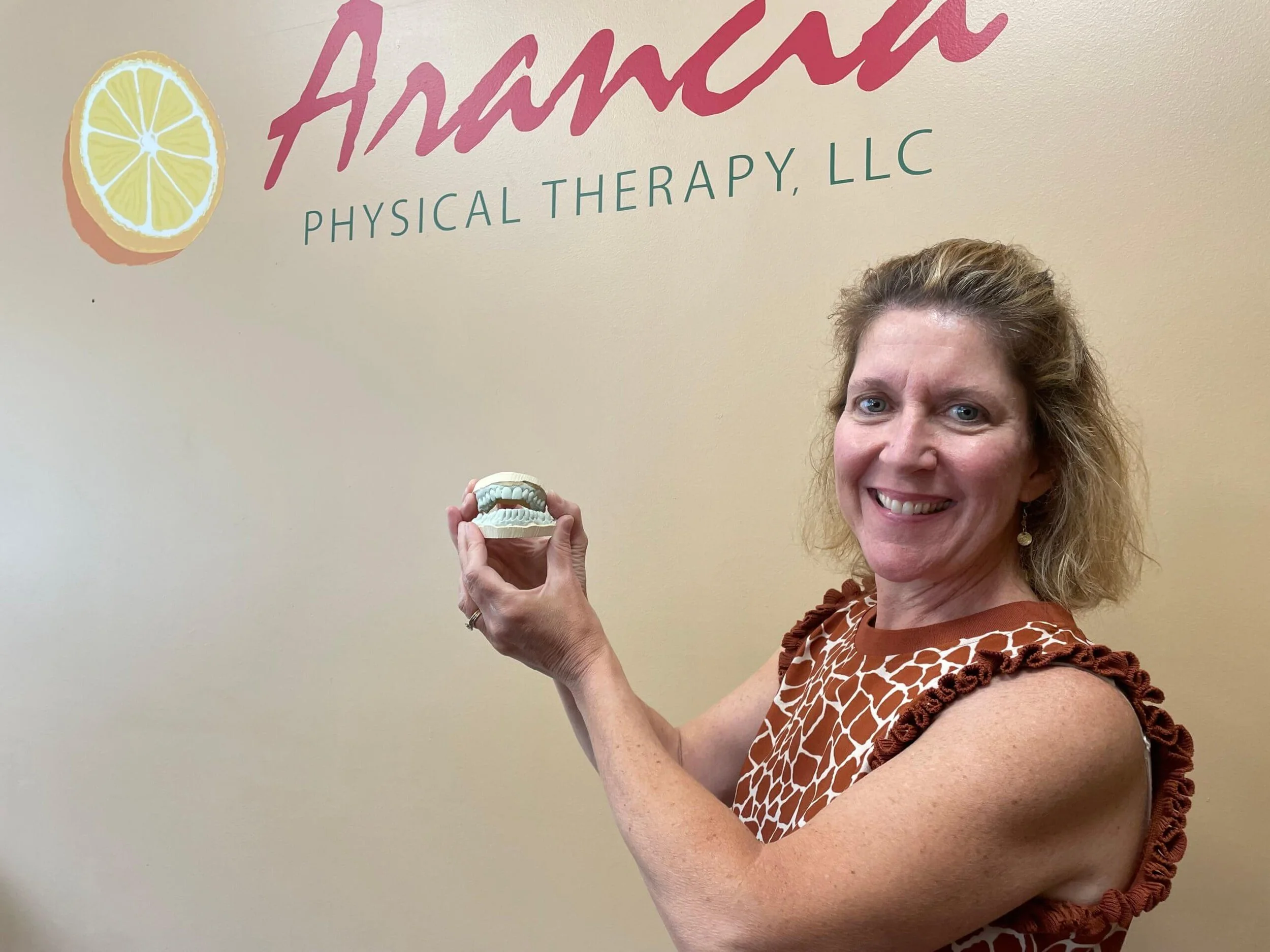You Know You Have TMJ When Laughing Hurts
TMJ, formally known as the temporomandibular joint, is a joint that sits just in front of your ear, forming the “hinge” joint for your jaw. While normally this joint moves relatively well, it can become inflamed and sometimes get “stuck”, resulting in pain.
Some common signs and symptoms for typical TMJ dysfunction:
- Pain or tenderness along the jaw
- Symptoms can occur on one or both sides of the jaw
- Clicking or “locking”
- “popping” sounds in the ear
- Asymmetrical opening/close of your mouth
- Aching pain in or around the ear
- Aching facial pain
- Pain in the temples/headaches
- Pain with chewing, talking, yawing, and laughing
- Poor posture
- Misalignment of your bite
- Stress (which often leads to grinding of the teeth)

Doesn’t sound like too much fun huh? I didn’t think so.
Although dentists can help with this problem, their typical solution is using a mouthguard at night to avoid excessive grinding. However, did you know that physical therapists treat this issue as well? And TMJ can even result from SITTING!?! I know right! When we look at the person from a whole body perspective, everything is connected to everything else. For instance, if we look at the pelvis, our pelvis has two sides to it and joined together in the back by a wedge-shaped bone, known as your sacrum. Your sacrum is where your body’s center of gravity lies when standing. Think of it using this analogy: you have a table with four legs and in the center of the table is a stack of plates with a bowling ball on top. When the table top (meaning your sacrum/pelvis) is level and stable, there isn’t any issue. But what happens if the table top becomes crooked?? Well think of it like this, when the table top is crooked, it makes one of the table legs shorter than the others; meaning that the stack of plates (meaning your spine) has to move and shift to keep the bowling ball (your head) in the center of gravity.
So what does this have to do with my jaw pain you ask? Well if we have an imbalance in the pelvis, it actually causes dysfunction up the spine (even down the legs and fee!). A typical treatment with a physical therapist starts with a postural assessment. We check from the front, back, and sides to look for fascial restrictions and imbalances. A slight forward head position is just enough to throw off the mechanics of the jaw, leading to fascial restrictions in the chest, anterior neck, posterior neck, leading into the thoracic spine. Think of the “hunchback” position that we’ve all seen in some people, especially in the geriatric community. Instead of just directly treating pinpoint jaw pain, your issue might actually be stemming from something else; which is why it’s vital for us as physical therapists to find the root cause of your pain, get you out of the pain cycle, and teach you ways to recognize and self treat in the long term to keep dysfunction at bay. If we aren’t teaching you, then what the heck are we doing here?!?!

Interesting factoid: Another patient population that’s impacted by TMJ and head/neck/back pain: adolescent girls. Think about it, females typically undergo puberty a lot sooner than boys do, resulting on growth spurts, typically making females a bit taller than their male classmates during this time. Women aged 18-44 are at an increased risk for TMJ dysfunction. What does this have to do with posture? A lot of teenage girls find their height intimidating and tend to “slump” forward and standing like they’re “hanging off of their joints”, trying not to appear so tall. Well when this happens, cue jaw, neck, shoulder, and back pain. The more you know!
Here are a few exercises to help alleviate jaw pain:
- With your mouth closed, part your teeth and rest your tongue on the roof of your mouth
- Goldfish exercise: partial to full opening, keeping the tongue in contact with the roof of your mouth
- Keeping your tongue in contact with the roof of your mouth to avoid excessive opening during yawning
- Chin tucks in either standing against a wall or lying on the floor
- Resisted opening/closing of the mouth, with your thumb fingers pushing against your chin
- Side to side movement of the jaw (using a tongue depressor or thin cloth in between the teeth
- Forward movement of the jaw (using a tongue depressor or thin cloth in between the teeth)
If you or someone you know is experiencing any symptoms of TMJ dysfunction as stated above, contact one of our specialist myofascial release doctors of physical therapy for relief today at 401-602-7006 to book a complimentary discovery visit!

